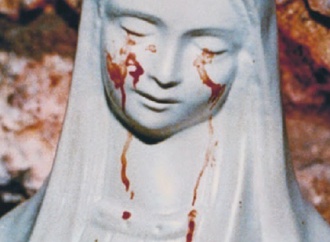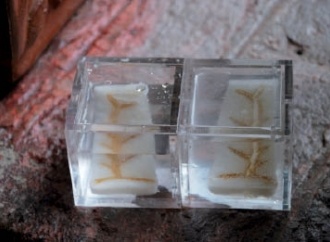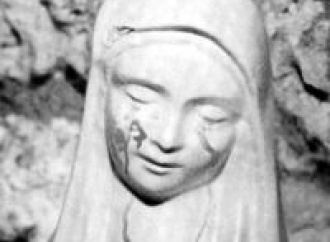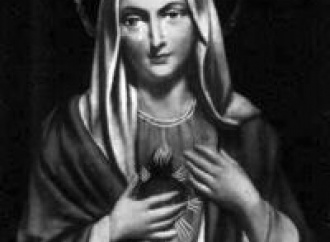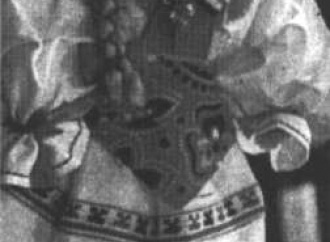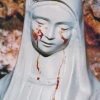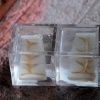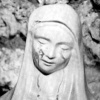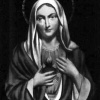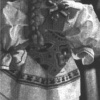Last February, Italian media reported that a mass-produced 17-inch-tall statue of the Madonna had wept tears of blood. The attention given by the media to this case, which at the beginning appeared as one of the many that had been reported all over Italy during the last two years, grew rapidly and, pretty soon, tv news and the front pages of the newspapers gave daily reports on the developments.
It all had begun in Civitavecchia (Rome) on February 16, 1995 when Fabio Gregori, an electrical worker and owner of the statue, declared that his daughter Jessica had spotted tears of blood running down the face of the statue of the Virgin Mary in his front yard. Gregori told what had happened to the local priest and, immediately, thousands of pilgrims started visiting the statue reporting that it continued weeping - though pictures taken in different moments of the days did not show any changes of the blood stains.
A church-appointed team conducted tests on the red substance which turned out to be male human blood.
At this point, a complaint against unknown persons was filed for the abuse of popular credulity, and the city magistrate, Antonio Albano, impounded and locked up the figurine. He also ordered another round of tests on the statue, including DNA test to see if its tears match the blood of Gregori male family members. The order put a sudden halt to plans for a solemn Good Friday procession that was to transport the Madonna to a specially built chapel, inside the nearby church of San Agostino.
The Vatican has so far maintained a diplomatic silence on the affair. But Cardinal Girolamo Grillo, Bishop of Civitavecchia, is said to be furious at the implication that science is being used to measure the integrity of a man of God. "The blood is masculine", told the bishop to the newspapers, "so it has to be the tears of Jesus"; it appears obvious that, had the blood turned out to be feminine, it would as well been declared a miracle, since the Madonna was a woman.
The Civitavecchia case has produced reams of commentary and theories: sociologists talk about a "collective angst" produced by Italy's ongoing political crisis. Dacia Maraini, a well known Italian writer, contends that the cult of the Madonna springs from an "archaic and irrational mentality", which fosters contempt of women. CICAP, the Italian skeptics' committee, was daily asked by the media to comment on the case and suggest possible natural ways of producing the "miracle".
We explained that it was impossible to say what had actually happened since the phenomena occured only before the owner of the statue.
Immediately, bizarre theories, not subscribed by CICAP, of remote-control devices or "special contact lenses that expand and release liquid when subjected to heat", begun to circulate as possible explanations. When an x-ray test of the statue proved it to be empty, and no other substances were found on the exterior of the statue, the failure of these explanations appeared clear and lent support to the theory which claims that: "science is unable to explain these phenomena".
Nobody, seemed to have thought of the simplest of all methods: the owner of the statue, in the comfort of his own home, could have taken some of his own blood and smeared it on the face of the statue. The claim of the bishop, who said he also saw the statue weep, can't be validated since at that time, the statue had been left unattended in his house where he also had three guests (one of which was a mystical seer).
The right thing to do, according to CICAP, would have been to immediately lock up the statue in a transparent case, place in front of it a video camera and a couple of persons as guards, and see if the weeping would have taken place under control. It is interesting to note that, while the statue was impounded by the magistrate, it never weeped.
As a closing note, it is quite revealing to see that the Gregori family has recently refused to subject to the DNA tests.
Massimo Polidoro, psychologist and head of research at CICAP (the Italian Committee for the Investigation of Claims of the Paranormal), has published about 10 books dealing with the investigation of psychic phenomena

